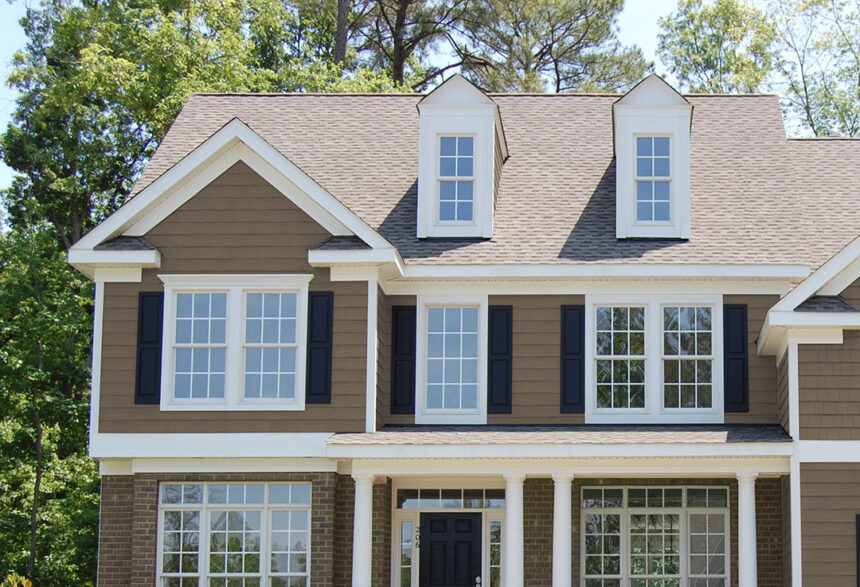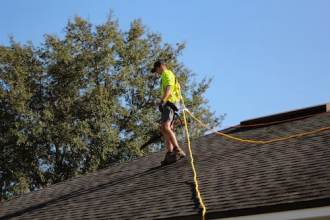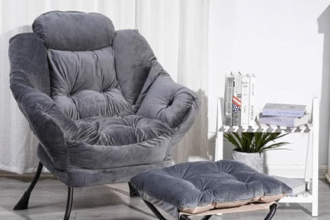When I first discovered composite cladding, I was amazed by how these innovative building materials could transform homes and our planet. These engineered products combine recycled wood fibers, plastics, and binding agents to create durable, attractive exterior finishes that stand the test of time while treading lightly on our environment.
In this article, I’ll show you why composite cladding deserves serious consideration for your next building project. You’ll learn about its impressive environmental benefits—from reducing deforestation and diverting waste from landfills to lowering carbon footprints through energy-efficient manufacturing processes. I’ll also explain how these materials contribute to better insulation and fewer maintenance resources over extended lifespans.
Understanding Composite Cladding Materials
Composite cladding represents a significant advancement in building materials technology. These versatile materials combine various components to create durable, attractive exterior solutions that reduce environmental impact compared to traditional options.
Definition and Composition
Composite cladding consists of a mixture of recycled wood fibers (typically 30-70%), recycled plastics like polyethylene or PVC (30-50%), and binding agents or additives (5-10%). This blend creates a material that mimics the appearance of natural wood or stone while offering superior weather resistance. The wood components provide structural strength and natural aesthetics, while the plastic elements deliver water resistance and longevity. Modern composites also incorporate UV stabilizers, anti-fungal compounds, and colorants to enhance performance and visual appeal without requiring additional chemical treatments after installation.
Manufacturing Process
The production of composite cladding follows a resource-efficient procedure. First, recycled materials undergo cleaning and processing—plastic is melted down and wood fibers are ground into a fine consistency. These components are mixed with binding agents and additives in large heated mixers. The resulting compound is forced through extrusion dies under high pressure and temperature (typically 300-380°F), forming continuous profiles with consistent dimensions. These extruded sections cool in water baths before being cut to specified lengths. This process uses 60-80% less energy than traditional timber processing, creating minimal waste as manufacturing scraps are reintroduced into the production cycle.
Environmental Benefits of Composite Cladding
Composite cladding materials deliver significant environmental advantages for building projects. These sustainable alternatives reduce ecological footprints while providing excellent performance characteristics for modern construction.
Use of Recycled Materials
Composite cladding incorporates a mixture of recycled wood fibers and plastic that would otherwise end up in landfills. The wood flour comes from sawdust, planer shavings, and scrap materials from lumber processing. The plastic components derive from everyday items like milk jugs, shampoo bottles, and grocery bags. This recycling approach transforms waste products into valuable building materials, dramatically reducing the strain on natural resources and decreasing landfill volumes.
Durability and Longevity
The exceptional durability of composite cladding extends product lifecycles up to 25 years. Unlike traditional materials, composite options resist weathering, rot, and pest damage, eliminating the need for frequent replacements. This longevity conserves natural resources by reducing the demand for new materials. The reduced maintenance requirements also minimize the need for chemical treatments, paints, and stains that can harm the environment when applied to conventional cladding options.
Energy Efficiency and Thermal Insulation
Composite cladding provides excellent thermal insulation properties for buildings. The material’s structure creates an effective barrier against heat transfer, helping maintain consistent indoor temperatures year-round. This insulating capability reduces heating and cooling demands, lowering energy consumption by 15-20% compared to buildings with standard cladding options. Lower energy requirements translate directly to reduced fossil fuel consumption and decreased greenhouse gas emissions over the building’s lifespan.
Reduced Environmental Impact
The manufacturing process for composite cladding consumes substantially less energy than traditional material production. The recycled content decreases the carbon footprint associated with material extraction and processing. Production generates minimal waste as manufacturing scraps get reintroduced into the production cycle. Also, composite cladding eliminates the need for harmful chemical preservatives often required for natural wood products, preventing these toxins from leaching into soil and water systems.
Recyclability and End-of-Life Benefits
Composite cladding materials remain recyclable at the end of their useful life. Many manufacturers use take-back programs to collect and process used composite materials into new products. This closed-loop approach extends the environmental benefits beyond the initial installation. The recyclability factor further reduces landfill waste and conserves resources by allowing the material components to be repurposed multiple times, creating a more sustainable building material lifecycle with minimal environmental impact.
Technical Performance and Sustainability Metrics
Composite cladding materials demonstrate impressive environmental benefits through measurable performance metrics. The data shows these materials significantly reduce resource consumption while maintaining excellent durability and efficiency.
Material Performance
Composite cladding incorporates eco-friendly materials that deliver substantial environmental benefits. Recycled aluminum components reduce virgin material extraction by up to 95%, cutting energy requirements and carbon emissions. Post-consumer plastic integration prevents waste from entering landfills, with each square meter of composite cladding typically containing 20-30 recycled plastic bottles. FSC-certified wood fibers from responsibly managed forests support biodiversity while ensuring sustainable timber harvesting practices. These materials combine to create cladding that’s both durable and environmentally responsible.
Life Cycle Assessment and Certifications
Composite cladding demonstrates superior environmental performance throughout its lifecycle. Independent assessments show these materials have a 60% lower carbon footprint than traditional alternatives. Many composite cladding products earn certifications like:
- LEED points contribution (2-4 points for recycled content)
- Cradle to Cradle certification (measuring material health and reutilization)
- EPD (Environmental Product Declaration) verification
Manufacturing uses 40-60% less water than conventional building materials, while production facilities often operate on renewable energy sources. At disposal, 85-95% of composite cladding components can be recycled or repurposed, creating a nearly closed-loop system.
Conclusion
Composite cladding is a powerful ally in environmental conservation through its innovative use of recycled materials. Made from reclaimed wood fibers and recycled plastics like milk jugs and shampoo bottles, it transforms waste that would otherwise end up in landfills into durable building components.
The exceptional durability of composite cladding—lasting up to 25 years or more—significantly reduces resource consumption by eliminating frequent replacements. This material resists weathering, rot, and pests without chemical treatments, further minimizing environmental impact.
By choosing composite cladding, you’re supporting a circular economy where materials get a second life rather than contributing to waste streams. The environmental benefits extend beyond recycling, including reduced demand for virgin resources and lower overall carbon footprints.
The combination of sustainability and performance makes composite cladding an increasingly popular choice for environmentally conscious building projects.













